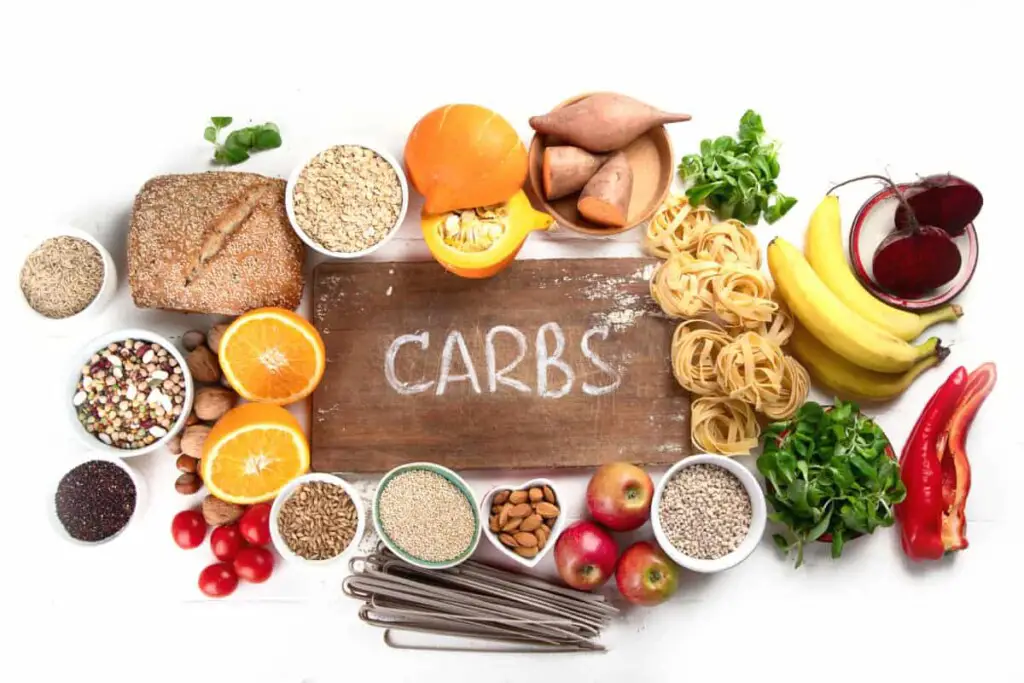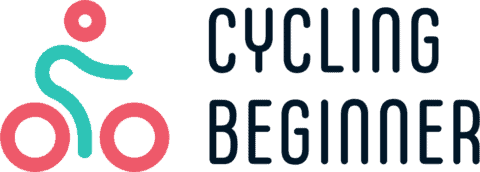Throwing up on your bike is neither fun nor healthy, but it might happen if you sit on your bicycle too soon after eating a big meal.
After a big meal, especially if it is high in fat, you should wait two hours before cycling. After a smaller meal or snack, it is enough to wait 30 to 60 minutes. The waiting time also depends on the intensity of the cycling. Commuting after a meal shouldn’t be a problem, while intensive riding is.
How quickly you can go cycling after eating depends heavily on the type of food you eat and its quantity. Below I will talk about how different foods affect your cycling performance and what potential problems you might have.
How long to wait to cycle after a meal?
Cycling is a demanding sport that requires a lot of energy. We get it through food, but after eating it, our body needs some time to break it down and absorb the nutrients.
Carbohydrates, the main source of energy for cyclists, are absorbed quite quickly. The body is able to digest and absorb 1 gram of carbohydrate per kilogram of body weight in one hour.

In theory, you can go cycling an hour after you’ve eaten a carbohydrate-rich meal. “But things can complicate if we add fat and fiber to a meal, which slow digestion down considerably,” warns Tim Podlogar, a nutritionist at pro cycling team Bora-hansgrohe.
The body is able to digest and absorb 1 gram of carbohydrate per kilogram of body weight in one hour.
Most cyclists don’t eat a meal that contains only carbohydrates. Most of the time, it will also include fat and fiber. And even if we eat only carbs, eating too much (and in most cases we do) will extend the time needed to digest all the food.
Therefore, a two-hour waiting period after a meal is recommended. That way, we make sure that all the food is digested and the nutrients are absorbed. However, if you have eaten a large, oversized meal full of fat, extending the waiting time to three hours might be a good idea.
However, it is important to remember that these are only general guidelines. It is up to each individual to work out how long they need to rest after a meal, as each body responds slightly differently.
Podlogar also urges people to listen to their own bodies, believing that some people can easily get on a bicycle immediately after a meal, while others have to wait much longer than expected.
“I don’t see a problem with riding with a ‘full stomach,’ as long as it’s not a problem for the individual. And reactions can be quite different between individuals,” he added.
It is advisable to eat foods full of carbohydrates before cycling and to avoid fats in particular.
Waiting two hours before riding is only advised after a big meal. If you have a small snack, about 30 minutes of waiting is enough. However, make sure that your snack is small, otherwise, you need to treat it as a meal.
For snacks, consider any food you would be willing to eat while cycling. This includes bananas, cereals and energy bars. After all, most of this is what we actually eat on the bike.
What happens if I start cycling too soon after eating?
You will go cycling too soon after eating only once. Trust me. It’s an unpleasant experience that you don’t want to go through again and again.
Your stomach hurts, you feel like you’re dying, and every pedal turn is a struggle.
Stomach cramps
The body reacts in different ways to too much load too quickly. Most common are stomach cramps that might lead to burping and even vomiting if the intensity is too high.
Vomiting is not only unpleasant but can even be dangerous. The body loses fluid, which then needs to be replaced. On extremely hot days that might be tough to do.
Stomach cramps happen when the intensity is too high. If you go on a commute, there is a small chance to get them, but you will almost certainly have them if you do interval training too soon after a meal.
Lower power
Imagine your body is like a car. If you put the wrong fuel in it, you won’t be able to go very far. It will have no power and soon it will break down.
While our body won’t break down as a car motor might, it still takes time before we can function normally after having the wrong kind of meal for cycling. Until your body digests all the food in your stomach, you will not have normal power.
Power output will lower mainly because our VO2 max is lower. Oxygen in our blood will not be used only in muscles, which would increase the power, but it will also be used for digestion. Less oxygen in the muscles, less power output. It’s that simple.
You don’t burn fat
Many people use cycling as a method for losing weight. The main goal of any weight loss is to get rid of excess fat.
When you have a full stomach, your body will initially use the nutrients that enter your blood from the food in your stomach. Only after it has absorbed all the nutrients from the stomach will it look for energy reserves stored in the body. But because digestion is a long process, it will take a few hours before the body starts using fat for energy.
Indigestion
Digested food must leave the body in one form or another. Some will leave the body through liquids, and some will leave the body in solid form.
But you probably won’t stop mid-ride to go on a toilet. So part of your digested meal will stay inside you, waiting to leave your body.
You will be putting different things into your body on your ride. You’ll drink isotonic drinks, maybe eat an energy gel. All this will mix with the rest of the food in your digestive system and you can imagine the rock ‘n’ roll that will reign inside you.
I guarantee that you will be looking for the nearest toilet very soon.
What to eat before a ride and what to avoid?
Food choice before a ride is an important decision. It will make a difference between a lovely ride and a living hell.
Meals before cycling should consist of food that can be digested quickly by the body and thus not remain in the stomach.
Carbohydrates are the preferred type of nutrients, as they have the best ratio of energy to digestion time. Some of the best carbohydrate-rich food to eat is:
- Pasta
- Rice
- Porridge
- Quinoa
- Granola
- Sweet Potato
- Banana
It’s important not only to know what to eat, but also what to avoid.
Foods full of fat are your worst enemy before a ride. They take way too much time to digest, so they will sit in your stomach for most of your ride.
However, fat-rich food can be and needs to be included in your diet, but not before a ride. Rather include it in a post-ride meal or, even better, in meals on a non-ride day.
The same goes for proteins. They are not as harmful as fat, but they also take way too long to digest. Therefore, having protein-rich food before a ride is a no-no, but eating them after the ride is not a problem.
It really shouldn’t be said, but just in case, I will say it anyway. Before you go on a ride, don’t drink any alcohol.

Not only can you get drunk, which is dangerous when you’re involved in traffic, but it will also hurt your performance.
Alcohol is known for dehydrating a body, which is something you really don’t want on a bike. Staying hydrated is a challenge itself, so there is no need to make it even harder.
Even more, alcohol disrupts the water balance in your body cells. The production of ATP molecules, which are essential for power output, is reduced, so muscles cannot work as they should. Consequently, your performance will drop.
Can you ride on an empty stomach?
Riding on an empty stomach has its benefits, but it also has some downsides.
The obvious benefit is that you won’t have any stomach cramps, as no food would upset your stomach. That means you don’t have to worry about potential vomiting, though it can still happen if you push yourself too hard.
I once threw up after an hour of super-intense uphill cycling. I hadn’t eaten before and I hadn’t eaten or drunk during the ride. It’s still my worst cycling mistake, but it taught me a lesson.
Another benefit of cycling on an empty stomach, which is why most people are doing it, is that your body starts burning fat much sooner.
The body needs the energy to function, and if it doesn’t get it from the nutrients in the stomach, it starts burning energy reserves in the body. Fat is one of the biggest energy reserves, so it is the first thing the body turns to.
However, losing weight that way is not advised. Sooner or later, your body will tell you that it can’t function normally and you might have some severe health problems.
Don’t even think about longer rides if you don’t have enough energy. With an empty stomach, you might commute without problems, but as soon as you start thinking about rides over 30 miles (50 km), also start thinking about eating. Otherwise, you won’t come very far.
If you don’t eat before your ride, at least make sure you have some energy-rich food with you. A banana, energy gel or energy bar will save you from “hitting the wall” and help you enjoy the last miles instead of having a sufferfest.
Professional cyclists even drink Coca-Cola on the bike, as it is high in carbohydrates. I have written an article about this, so if you want to find out what benefits does Coca-Cola has for cyclists, definitely read it.
Related questions
Is drinking before a ride okay?
You can drink normally before going on a ride, as long as you don’t drink alcohol. Water is always a good choice, but it’s also worth considering some sports drinks. Choose those with high carbohydrate levels or with high electrolytes levels. You need both during your ride.
What to eat after the ride?
You should start eating no later than 30 minutes after your ride for optimal recovery. The meal must contain carbohydrates (pasta, rice, sweet potato), some proteins (chicken, tuna, eggs, greek yogurt) and a bit of fat (avocado, peanut butter).
Can I eat mid-ride?
Eating is necessary during longer rides. The body burns energy, which we need to supply constantly. The easiest way to do it is by energy gels as we can have problems eating thicker food. A banana is another great choice to take on a ride, although it is more difficult to carry than energy gels.

